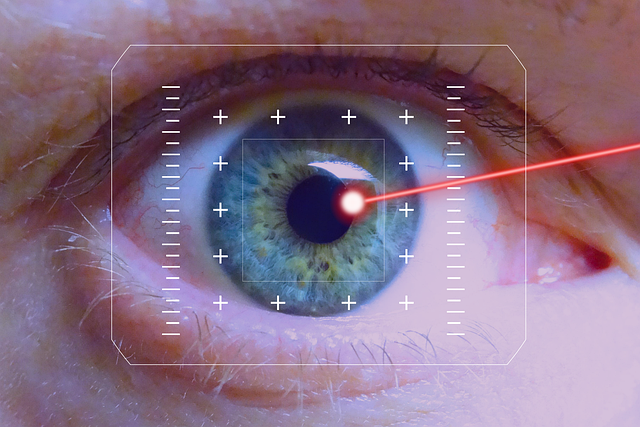In an era where screens dominate our living rooms, the quest for ever sharper imagery has become a defining challenge for manufacturers and consumers alike. At the heart of this pursuit lies the relationship between resolution and the subtle, sometimes overt, forms of image distortion that can ruin an otherwise immersive experience. Understanding how resolution influences these distortions is key to making informed choices about TVs, monitors, and the evolving landscape of display technology.
Pixel Density and the Perception of Clarity
Resolution is measured in pixels, but the raw count alone does not tell the whole story. Pixel density, expressed as pixels per inch (PPI), determines how tightly those pixels are packed. A higher PPI means each pixel is smaller, allowing the eye to resolve finer detail and reducing the likelihood of perceivable blockiness. When pixel density is low, even a high-resolution screen can suffer from image distortion manifested as jagged edges or “staircase” effects on curved lines.
- Full HD (1920×1080) offers 81 ppi on a 55‑inch TV.
- 4K Ultra HD (3840×2160) pushes that figure to 147 ppi on the same size.
- 5K and 8K panels provide even higher densities, making subtle distortion increasingly rare at typical viewing distances.
Subpixel Arrangement: A Hidden Source of Distortion
Modern displays do not simply treat each pixel as a single block of color. Instead, they use subpixels—tiny red, green, and blue elements—to compose the full image. The way these subpixels are arranged can create distortion if the viewer’s eye encounters them at oblique angles. The most common configuration, RGB stripe, aligns subpixels horizontally. When viewing the screen from the side, the eye can detect slight color fringes or a “screen door” effect, especially on low‑resolution panels.
Subpixel rendering is an advanced technique that corrects for such distortion by manipulating the color of individual subpixels to smooth edges.
In contrast, OLED panels often employ a more sophisticated arrangement that mitigates visible subpixel boundaries, reducing the risk of distortion across varied viewing angles.
Aliasing and Moiré Patterns
Aliasing occurs when high-frequency details in a source image are not fully captured by the pixel grid. The result is a jagged or staircase appearance along diagonal lines. This phenomenon is more pronounced on TVs with lower resolutions or on displays with large pixel sizes. Moiré patterns arise when repeating patterns in the source content clash with the subpixel lattice, producing rippling or shimmering artifacts that can be disconcerting.
Pixelation: The Classic Distortion
Pixelation is perhaps the most familiar form of image distortion. It happens when the source material is either too low in resolution for the display or when the TV’s scaling algorithm fails to interpolate between pixels smoothly. In pixelated footage, individual pixels become visible, especially in large panels where each pixel occupies more screen real estate.
Motion Blur and Blooming
Even with a high pixel density, fast-moving scenes can suffer from motion blur. This distortion is caused by the persistence of the pixel output across the frame interval, especially on older LCD panels with slower response times. Blooming, on the other hand, manifests as a halo around bright areas, often a side effect of backlight bleed or overdriven pixels in HDR content. Both distortions can be mitigated by higher refresh rates and better panel technologies.
Interlacing vs. Progressive Scanning
Traditional broadcast standards often used interlaced scanning, where each frame is split into two fields. While this technique can reduce bandwidth, it introduces a distinct distortion known as interlace flicker, particularly noticeable in low‑resolution displays. Modern televisions increasingly favor progressive scanning, capturing each frame in full, which eliminates many of the artifacts associated with interlacing and aligns better with high‑resolution source material.
Upscaling and Interpolation Techniques
Upscaling is the process of converting lower‑resolution content to match the native resolution of a display. The quality of upscaling hinges on the interpolation algorithm used. Simple nearest‑neighbor methods can introduce new distortion by replicating pixels, whereas more advanced approaches—such as Lanczos or neural‑network based algorithms—smooth edges and preserve detail. Manufacturers invest heavily in proprietary upscaling engines to reduce visible distortion in older media.
- Nearest‑neighbor: quick but prone to blockiness.
- Bilinear: smoother but can blur fine details.
- Lanczos: balances sharpness and anti‑aliasing.
- Neural‑network: adaptive, learning from vast datasets.
Emerging Technologies that Minimize Distortion
OLED and microLED panels represent a leap forward in pixel architecture. With self‑emissive pixels, these displays avoid the backlight issues that can cause blooming and allow for pixel‑perfect scaling. MicroLED, in particular, uses millions of microscopic LEDs to produce native resolution content without upscaling, eliminating one major source of image distortion.
Quantum dot displays enhance color gamut and reduce the need for complex color correction, which can otherwise introduce distortion. High‑refresh‑rate panels (120 Hz and beyond) also diminish motion blur, making fast sports or action sequences crisper.
Practical Considerations for Consumers
When shopping for a TV, resolution should be balanced with other factors that influence distortion. The optimal resolution depends on the viewing distance: a 55‑inch 4K TV provides the best results at 6–10 feet, whereas a 32‑inch 4K TV is overkill for a couch sitting just a few feet away. Additionally, panel type (OLED, QLED, LED‑LCD) affects how distortion manifests, so test the device in person when possible.
Calibration is essential. Adjusting brightness, contrast, and color temperature can reduce perceived distortion and bring the picture closer to the source.
Choosing the Right Refresh Rate
High‑refresh‑rate panels (≥120 Hz) help mitigate motion blur, especially in gaming or sports contexts. However, the underlying pixel technology must also support quick response times to prevent ghosting, which is a form of distortion that follows fast-moving objects.
Understanding HDR and Color Depth
High Dynamic Range (HDR) content relies on a wider color gamut and deeper contrast. Without proper calibration, HDR can exaggerate color distortion, making images look washed out or oversaturated. A TV’s native color depth (10‑bit vs. 8‑bit) determines how smoothly gradients are rendered, directly affecting the severity of banding—a subtle form of distortion where gradients appear as discrete steps.
Conclusion
The relationship between resolution and image distortion is complex yet pivotal for achieving visual fidelity. While higher resolution reduces the potential for pixelation and aliasing, other factors—pixel density, subpixel arrangement, panel technology, and scaling algorithms—play equally significant roles. By understanding these elements, consumers can make informed decisions that minimize distortion and maximize the immersive experience offered by modern displays.




